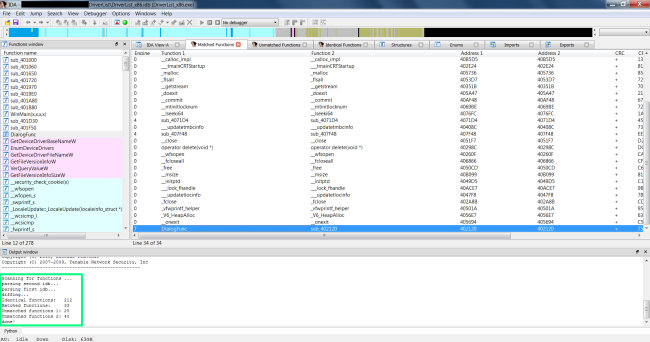… Or why stealing software is stupid (and wrong). A small guide to detect software theft for those who are not reverse engineers.
Under my previous post the user Xylitol reported a web-page (hxyp://martik-scorp.blogspot.com/2010/12/show-me-loaded-drivers.html) by someone called “Martik Panosian” claiming that my driver list utility was his own.
Now, the utility is very small and anybody who can write a bit of code can write a similar one in an hour. Still, stealing is not nice. 🙂
Since I can’t let this ignominious theft go unpunished :P, I’ll try at least to make this post stretch beyond the specific case and show to people who don’t know much about these sort things how they can easily recognize if a software of theirs has been stolen.
In this specific case, the stolen software has been changed in its basic appearance (title, icon, version information). It can easily be explored with a software such as the CFF Explorer. In this case the CFF Explorer also identifies the stolen software as packed with PE Compact. If the CFF Explorer fails to recognize the signature, it’s a good idea to use a more up-to-date identification program like PEiD.
However, packing an application to conceal its code is a very dumb idea. Why? Because packers are not meant to really conceal the code, but to bind themselves to the application. What is usually difficult to recover in a packed application is its entry-point, the IAT and other things. But the great majority of the code is usually recoverable through a simple memory dump.
Just select the running application with an utility such as Task Explorer, right click to display the context menu and click on “Dump PE”.
Now the code can be compared. There are many ways to compare the code of two binaries. One of the easiest is to open it with IDA Pro and to use a binary diffing utility such as PatchDiff2. If the reader is doing this for hobby and can’t afford a commercial license of IDA Pro, then the freeware version will do as well.
Just disassemble both files with IDA Pro and save one of the idbs. Then click on “Edit->Plugins->PatchDiff2” and select the saved idb.
Let’s look at a screenshot of the results:
As it is possible to see, not only were the great majority of functions matched, but they also match at the same address, which proves beyond doubt that they are, in fact, the same application.
It’s important to remember that a limited number of matches is normal, because library functions or some basic ones may match among different applications.
A comparison of two applications can even be performed manually with IDA Pro, just by looking at the code, but using a diffing utility is in most cases the easiest solution.

